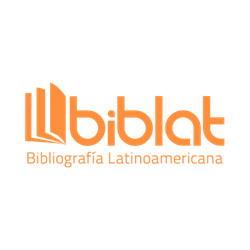Propiedades adhesivas de mezclas de almidón de yuca termoplastificado y ácido poliláctico (TPS/PLA)
Keywords:
Adhesivo, Biodegradable, Ácido poliláctico (PLA), Almidón termoplástico (TPS), Calorimetría diferencial de barrido (DSC), índice de fluidez y análisis dinámico mecánico (DMA).Abstract
La necesidad de alternativas eco-amigables en todos los ámbitos productivos, ha llevado a la generación de productos innovadores basados en fuentes renovables, sin degradar su funcionalidad. Un adhesivo biodegradable fue desarrollado, basado en una mezcla de almidón termoplastificado (TPS) y de ácido poliláctico (PLA). Se evaluaron las propiedades mecánicas, térmicas y viscoelásticas mediante ensayos de tensión, calorimetría diferencial de barrido (DSC), índice de fluidez y análisis dinámico mecánico (DMA). La formulación TPS 70/30, en la mezcla TPS/PLA: 50/50 puede ser suministrada en forma de pellets, barra o película, ofreciendo propiedades adhesivas comparables al convencional etilenvinil acetato (EVA).
Downloads
References
[2] M. Viljanmaa, A. Södergárd and P. Tömälä. Lactid acid based polymers as hot melt adhesives for packaging applications. International Journal of Adhesion & Adhesives 22 (2002) 219-226.
[3] W. Choi, Ch. Lee and H. Park. Development of biodegradable hot-melt adhesive based on poly- ε-caprolactone and soy protein isolate for food packaging system. LWT 39 (2006) pp. 591-597.
[4] J. Seppälä. Biodegradable Polymers Technology Programme Tekes. 1997. pp. 13-34.
[5] U. Funke, W. Bergthaller and M. G. Lindhauer. Processing and characterization of biodegradable products based on starch. Polymer degradation and stability, 59, (1998) pp. 293-296.
[6] I. Skeist. Handbook of Adhesives. 3rd. Ed. Van Nostrand Reinhold. (1990) Capítulos 1-4.
[7] M. Viljanmaa, A. Södergárd and P. Tömälä. Adhesion properties of lactic acid based hot melt adhesives and the storage stability in different packaging applications. International Journal of Adhesion & Adhesives 22 (2002) pp. 447-457.
[8] J. Zhang and X. Sun. Poly(lactic acid)-based bioplastics. In Ray Smith (Ed.) Biodegradable polymers for industrial applications. (2005). pp. 251- 288).
[9] O. Martin and J. Avérous. PLA: plasticization and properties of biodegradable multiphase systems. Polymer 42 (2001) pp. 6209-6219.
[10] A. G. Pedroso and D. S. Rosa. Mechanical, thermal and morphological characterization of recycled LDPE/corn starch blends. Carbohydrate Polymers, 59, pp. 1-9.
[11] Y. Park, H. Joo, H. Kim and Y. Lee. Adhesion and rheological properties of EVA-based hot-melt adhesives. International Journal of Adhesion & Adhesives 26 (2006) pp. 571-576.
[12] E. P. Chang. J Adhesion 1991; 34:189.
[13] Handbook of Adhesives. Edited by Skeist I. (3rd. Ed., 1990). Ed. Van Nostrand Reinhold.
[14] T. Ke, S. Sun and P. Seib. Blending of poly(lactic acid) and starches containing varying amylase content. Journal of applied polymer science, 89, (2003). pp. 3639-3646.
[15] L. Lim, R. Auras and M. Rubino (2008). Processing technologies for poly(lactic acid). Progress in polymer science (in press).
Downloads
Published
How to Cite
Issue
Section
License
Published papers are the exclusive responsibility of their authors and do not necessary reflect the opinions of the editorial committee.
INGE CUC Journal respects the moral rights of its authors, whom must cede the editorial committee the patrimonial rights of the published material. In turn, the authors inform that the current work is unpublished and has not been previously published.
All articles are licensed under a Creative Commons Attribution-NonCommercial-NoDerivatives 4.0 International License.



 English
English
 Español (España)
Español (España)






















